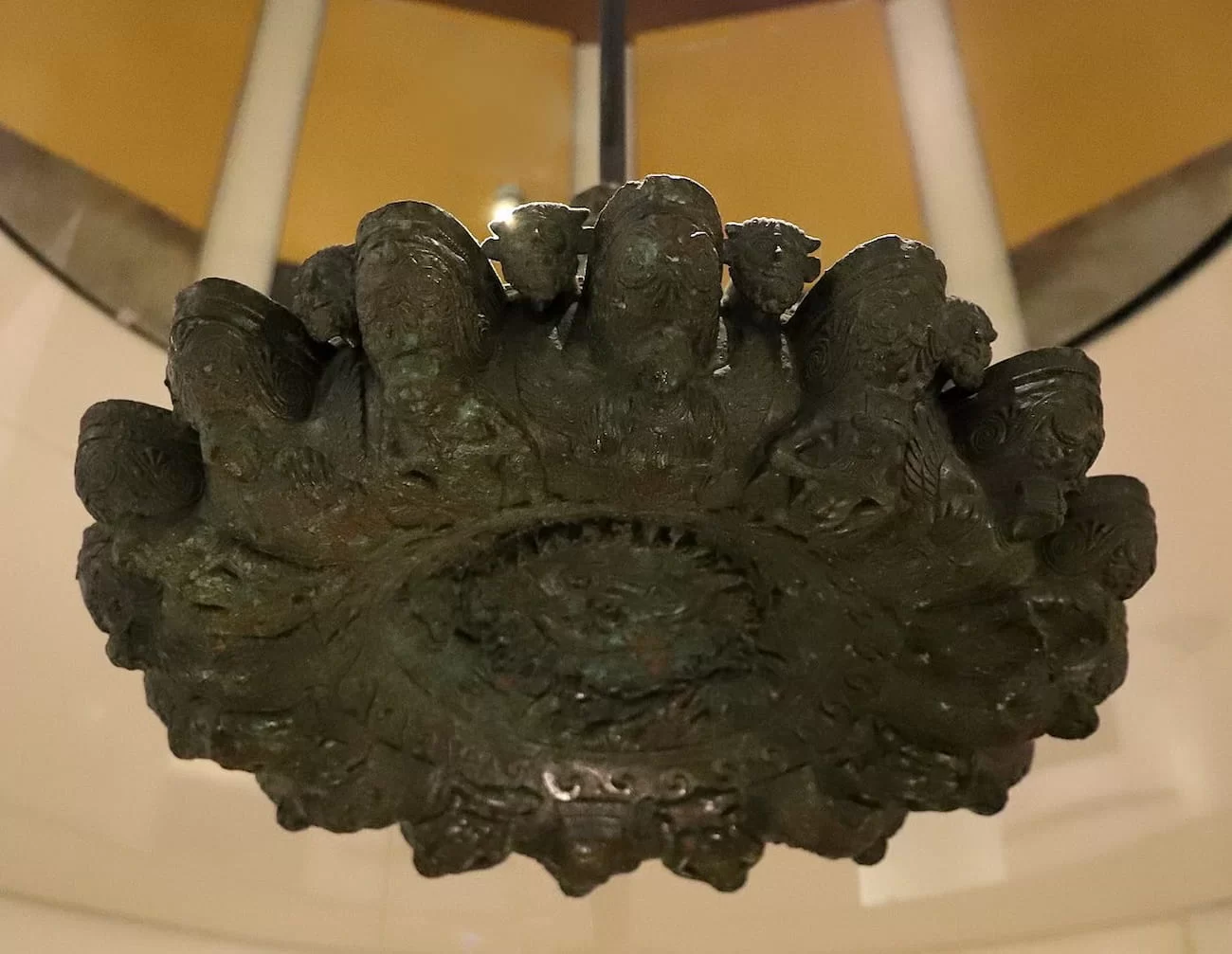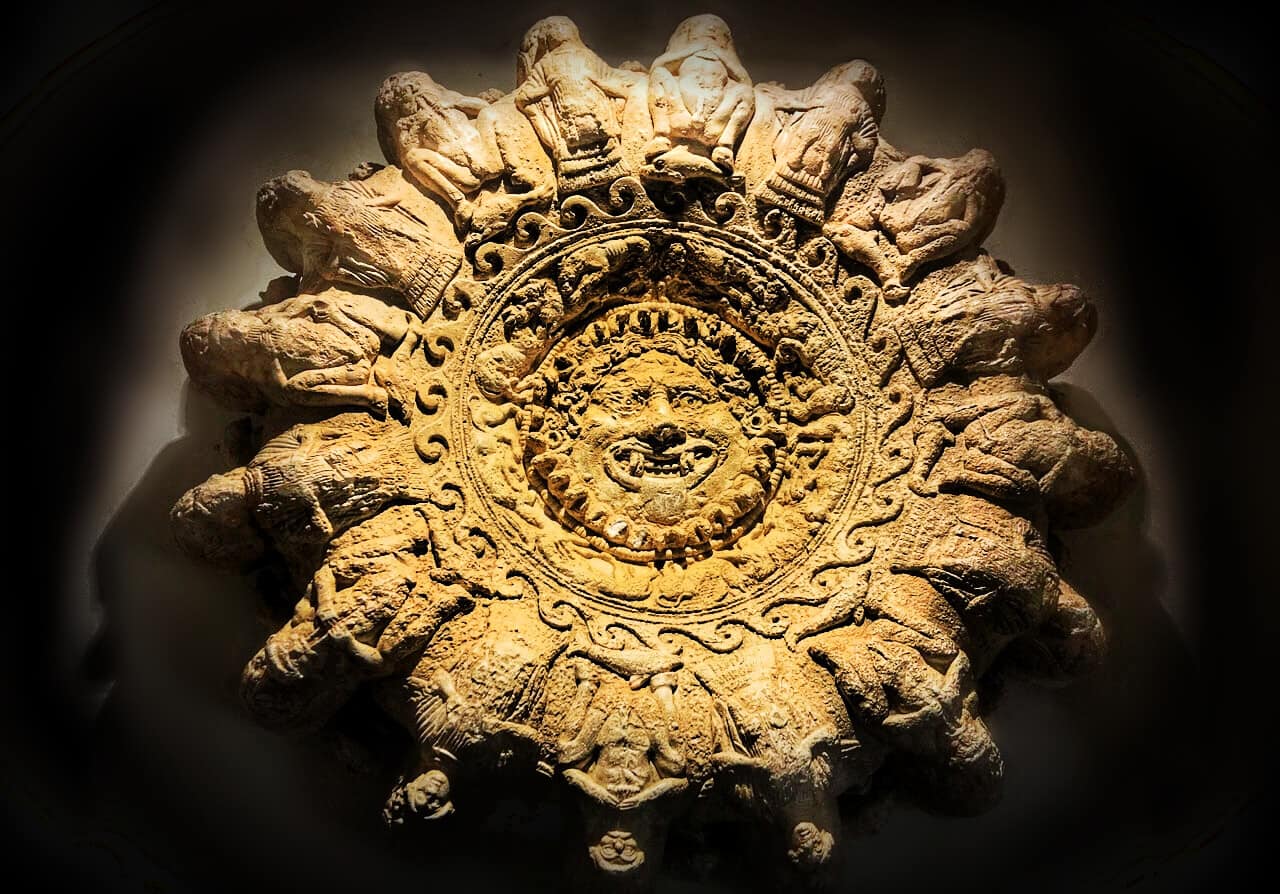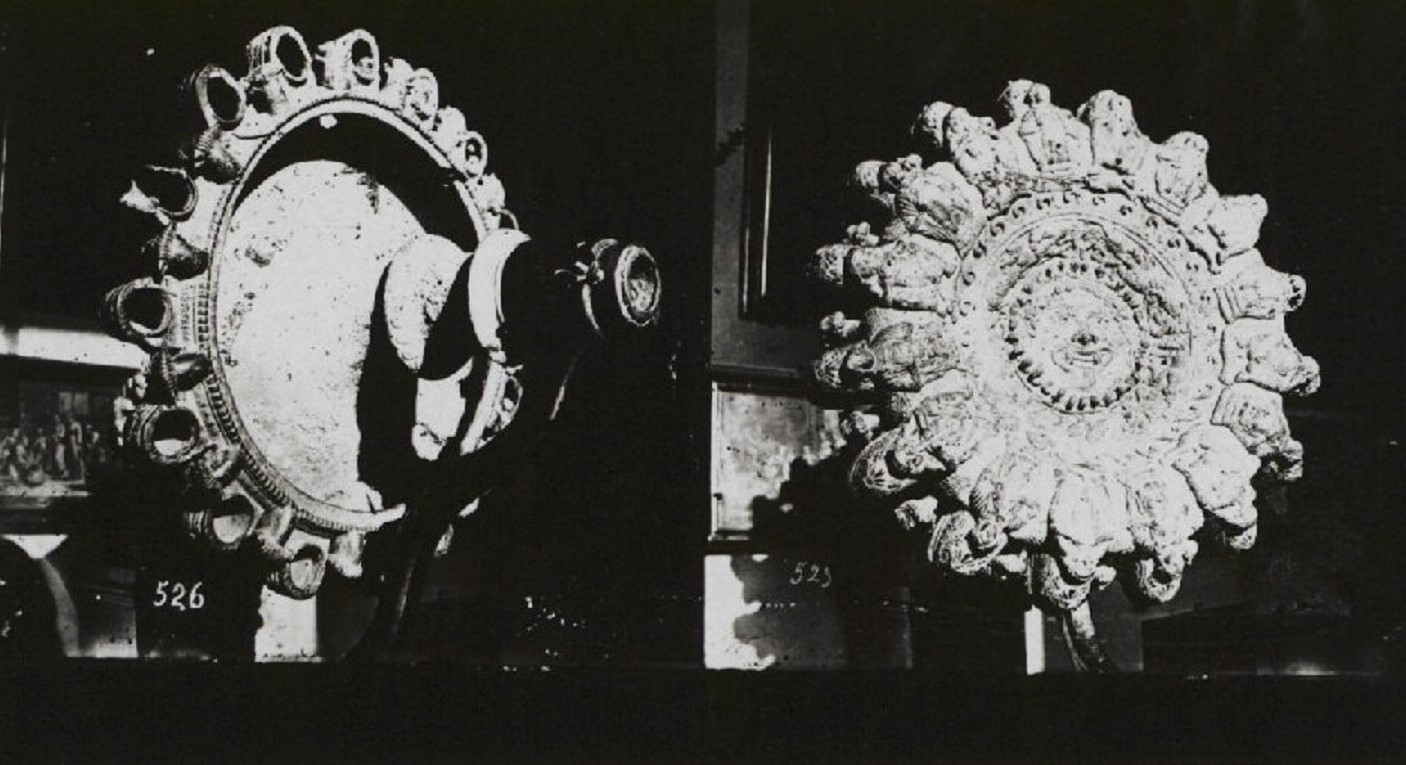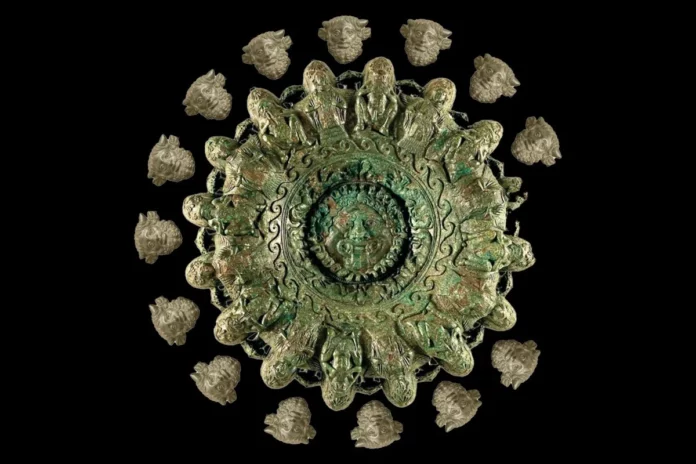A captivating new study has challenged previous theories surrounding a striking bronze lamp discovered in Cortona, Italy. Unearthed in 1840, this artifact has long intrigued scholars due to its age and elaborate decorations. Recent research, led by PhD student Ronak Alburz and Associate Professor Gijs Willem Tol of the University of Melbourne, sheds new light on the lamp’s origins and significance. Their findings, published in Etruscan and Italic Studies, propose that this artifact, originating from the ancient Etruscan civilization, was not merely a decorative object but a significant cultic item associated with the Dionysian mysteries.
The Rarity of This Lamp: Uncovering the Cult

The bronze lamp, weighing nearly 60 kilograms and measuring 60 centimeters across, has puzzled scholars for two main reasons. First, its rarity in Etruscan and Ancient Greek art means that finding comparable objects is difficult, complicating efforts to understand its full significance. Second, the lamp’s purpose remained elusive due to a lack of contextual clues beyond a later inscribed bronze plaque.
The recent study by Alburz and Tol proposes a groundbreaking reinterpretation of the lamp. Previously dated to around 300 BC, the new research suggests it was actually created around 480 BC. More intriguingly, the researchers argue that the lamp depicts Dionysus, the Greek god of wine, pleasure, and revelry, rather than the Greek river god Acheloos as previously thought. They believe the lamp illustrates the Dionysian thiasus, Dionysus’ ecstatic entourage, engaged in a cultic performance.

Alburz speculates that the lamp may have been used in Dionysian mystery rituals or celebrations. This interpretation offers fresh insights into ancient religious practices, enhancing our understanding of this fascinating artifact from Archaic Etruria.
“The lamp was probably an object associated with the mystery cult of Dionysus. Its decoration represents the Dionysian thiasus, perhaps engaged in a cultic performance in the cosmos of the mysteries in celebration of Dionysus,” Alburz explained in a press release.
Dionysian Festivals and Symbolism

The Dionysian festivals, known as Dionysia, were dedicated to celebrating Dionysus, highlighting the importance of wine, pleasure, and revelry in ancient Greek culture. The lamp’s intricate design, featuring 16 bull-horned figures, has been reinterpreted to represent Dionysus rather than Acheloos. Dionysus was frequently depicted with bull features, supporting the theory that these figures are part of his revelrous entourage.
Despite the absence of contextual information about the building or other associated artifacts, Alburz and Tol’s study provides a compelling new perspective on the lamp’s symbolism and use. The detailed iconographic evidence and literary sources they drew upon suggest that the lamp was not just a decorative piece but a significant religious object tied to the Dionysian cult.
Etruscans: Archaic Etruria and a World Gone By

The lamp hails from the ancient Etruscan civilization, which flourished in Archaic Etruria, an area corresponding to modern-day Tuscany and parts of Umbria. The Etruscan civilization, existing from around 900 BC to 27 BC, was organized into three main confederacies of cities. As the Roman Republic expanded, the Etruscan civilization was gradually absorbed, culminating in its integration into Rome by the late 4th century BC.
The rarity of similar objects in Etruscan and Ancient Greek art complicates efforts to find direct comparisons that could help interpret the lamp’s design and symbolism. Etruscan lamp-making was an essential craft, serving both practical and ritualistic purposes. While not as numerous as other forms of Etruscan art, various types of lamps have been discovered, each typically featuring a shallow bowl for oil, a central wick nozzle, and a handle for carrying or hanging. Decorative motifs often included geometric patterns or mythological scenes.
Conclusion
The new study by Alburz and Tol significantly revises our understanding of the bronze lamp from Cortona, suggesting it was a crucial artifact associated with the Dionysian mystery cult rather than just an ordinary object of art. This reinterpretation not only enhances our knowledge of ancient religious practices but also highlights the intricate and symbolic nature of Etruscan artifacts. As scholars continue to delve into the mysteries of ancient civilizations, discoveries like this lamp offer invaluable insights into the rituals and beliefs of bygone eras.
